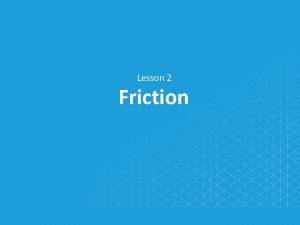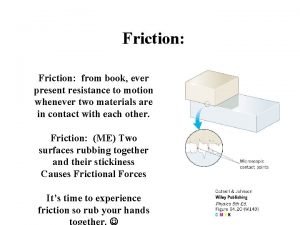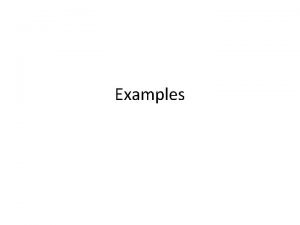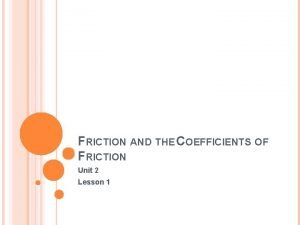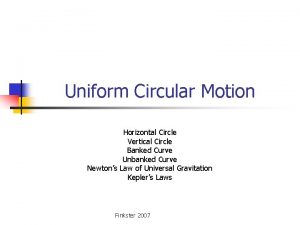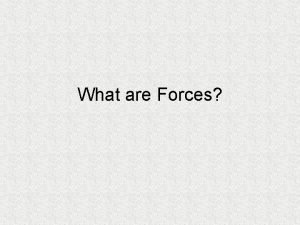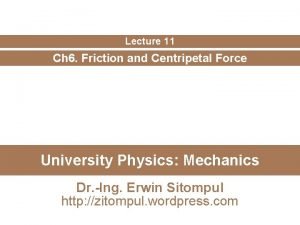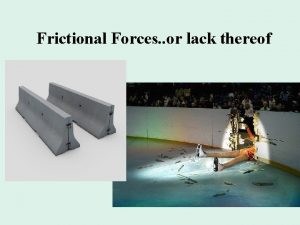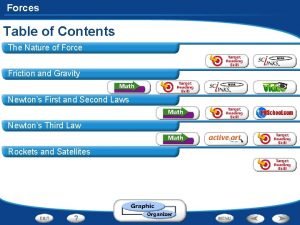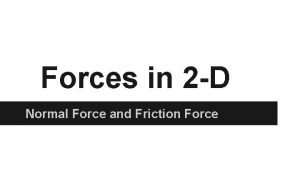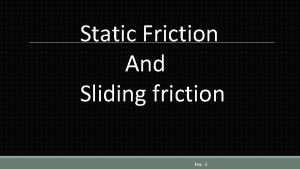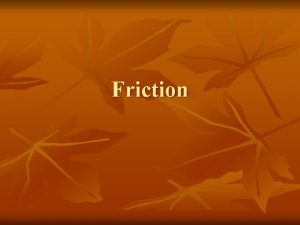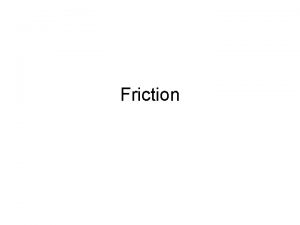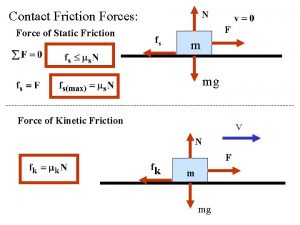THE FORCE OF FRICTION Chapter 4 4 Static












- Slides: 12

THE FORCE OF FRICTION Chapter 4. 4

Static Friction The resistive force that keeps an object from moving when pushed across a surface is called static friction When the applied force is as great as it can be without causing the object to move, the force of static friction reaches its maximum value

Kinetic Friction When the applied force exceeds the maximum value for static friction, the object begins to move with an acceleration The frictional force on an object in motion is called kinetic friction Visual Concept

Which is easier? To push a chair across the floor at a constant speed OR To push a heavy desk across the floor at the same speed

Ff proportional to FN It is easier to push a chair across the floor at a constant speed than to push a heavy desk across the floor at the same speed. The magnitude of the force of friction is proportional to the magnitude of the normal force Since the desk is heavier than the chair, the desk experiences a greater normal force, therefore greater friction

Chapter 4 The Coefficient of Friction The quantity that expresses the dependence of frictional forces on the particular surfaces in contact is called the coefficient of friction, . It is the ratio between friction force and normal force It is always a number that is between 0 and 1. It is unit less

Chapter 4 Coefficient of Friction Related to the type of surface Visual Concept

Friction Equation The “FUN” equation!! Ff = Friction Force (N) = coefficient of friction (no units) FN = Normal Force* (N) *The normal force is usually the same as an objects weight, except for when something is pulling up or pushing down on the object even though it is on a flat surface.

Example #1 Suppose that between a table and the floor is 0. 62. If the table has a mass of 5 kg, then what is the force needed to push it so that it moves with a constant speed?

Example #2 A force of 240 N is used to pull a 60 kg sled along snow-covered flat ground. If the friction coefficient is 0. 28, then find the acceleration.

Example #3 A 50 kg sled is pushed along snow-covered ground. The friction coefficient is 0. 13 What force is needed to accelerate the sled at a rate of 5. 6 m/s 2? How far will it have gone after 5 seconds of pushing?

Practice Problems Suppose between a book and a tabletop is 0. 34. If the book’s mass is 0. 563 kg then what is the force needed to push it so that it moves with a constant speed? A force of 80 N accelerates a 6. 0 kg block of wood at a rate of 6. 6 m/s 2 along a level surface. Find the coefficient of friction. A force of 80 N accelerates a 7. 0 kg box at 4. 7 m/s 2 along a level surface. Find the coefficient of sliding friction for the box. How far will the box have gone after 5 seconds of pulling it?
 Air resistance contact or noncontact force
Air resistance contact or noncontact force Chapter 5 visual 2 static and kinetic friction
Chapter 5 visual 2 static and kinetic friction Learning objectives of friction
Learning objectives of friction Kinetic and static friction
Kinetic and static friction Everpresent newton
Everpresent newton Direction of static friction
Direction of static friction Coefficient of static friction unit
Coefficient of static friction unit Circular motion
Circular motion What is force
What is force Friction and centripetal force
Friction and centripetal force Sand is often placed on an icy road
Sand is often placed on an icy road Nature of force
Nature of force How to find force of friction
How to find force of friction



